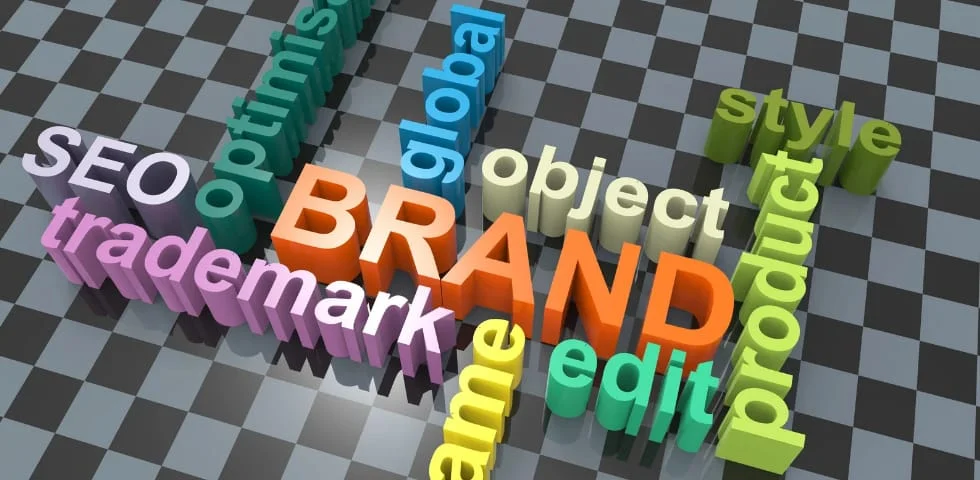Introduction
In today’s digital-first world, the e-commerce industry is booming, with online sales projected to reach over $6 trillion globally by 2024. Yet, the surge in online shopping also means heightened competition. Businesses are no longer just competing with local shops but with a global marketplace, making it more challenging to stand out. The solution? A robust e-commerce marketing strategy that not only drives traffic but also converts visitors into loyal customers.
E-commerce marketing is more than just selling products online; it’s about creating an entire ecosystem that attracts, engages, and retains customers. From optimizing your website for search engines to leveraging social media, email marketing, and paid advertising, there are numerous strategies that can help you grow your online presence and boost sales. But with so many options, where do you start?
This blog post will guide you through proven strategies for promoting and selling products online. Whether you’re a seasoned digital marketer or a small business owner stepping into the e-commerce space, these tactics will help you navigate the competitive landscape and achieve sustainable growth.
Overview of E-commerce Marketing

Definition and Importance
E-commerce marketing is the practice of using promotional tactics to drive traffic to your online store, convert that traffic into paying customers, and retain those customers post-purchase. It’s a multifaceted approach that integrates several marketing channels, each playing a crucial role in the customer journey.
Why is e-commerce marketing so vital? The answer lies in the behavior of today’s consumers. With the ease of online shopping, consumers have endless options at their fingertips. They can compare products, read reviews, and make purchases from the comfort of their homes. Without a strategic approach to marketing, even the best products can get lost in the noise of the digital marketplace. Effective e-commerce marketing ensures your products are visible, your brand is memorable, and your customers are engaged.
Key Components of a Successful E-commerce Marketing Strategy
- Search Engine Optimization (SEO): SEO is the backbone of your online presence. By optimizing your website and content for search engines, you increase the likelihood of appearing in search results when potential customers are looking for products like yours. This organic visibility is essential for driving traffic to your e-commerce site.
- Social Media Marketing: Social media platforms are not just for socializing—they’re powerful tools for marketing. By strategically using platforms like Instagram, Facebook, and Pinterest, you can build a community around your brand, showcase your products, and even drive direct sales through shoppable posts.
- Content Marketing: High-quality content, such as blog posts, videos, and infographics, helps to attract, engage, and educate your audience. It also plays a significant role in SEO and can establish your brand as an authority in your niche.
- Email Marketing: Email remains one of the most effective channels for driving sales. Through targeted campaigns, you can keep your customers informed about new products, promotions, and personalized recommendations, encouraging repeat purchases.
- Paid Advertising: While organic strategies are crucial, paid advertising, like Google Ads and social media ads, can significantly boost visibility and drive targeted traffic to your site. The key is to optimize these ads for maximum return on investment (ROI).
These components work in harmony to create a comprehensive e-commerce marketing strategy. In the sections that follow, we’ll dive deeper into each of these tactics, offering actionable insights to help you implement them effectively.
SEO Strategies for E-commerce Websites

Keyword Research
Keyword research is the foundation of any effective SEO strategy. For e-commerce, it’s not just about finding high-volume keywords, but also understanding the intent behind them. Start by identifying primary keywords related to your products, such as “buy [product name] online” or “[product name] deals.” Tools like Google Keyword Planner, Ahrefs, and SEMrush can help you find these keywords and assess their competitiveness.
Focus on long-tail keywords as well—phrases that are more specific and often less competitive. For instance, instead of targeting “running shoes,” you might target “best running shoes for flat feet.” These keywords are particularly valuable because they attract highly targeted traffic that is more likely to convert.
On-Page Optimization
Once you’ve identified the right keywords, it’s time to optimize your e-commerce site. Here are the key areas to focus on:
- Title Tags and Meta Descriptions: Ensure that each product page has a unique title tag and meta description that includes your primary keyword. The title should be compelling and accurately describe the product, while the meta description should entice users to click through from search results.
- Headers and Subleaders: Use headers (H1, H2, H3) to structure your content logically and include keywords where appropriate. The H1 tag should typically be the product name or a variant that includes your target keyword.
- Product Descriptions: Write detailed, informative product descriptions that incorporate relevant keywords naturally. Avoid keyword stuffing; instead, focus on describing the product’s features, benefits, and unique selling points. Include synonyms and related terms to improve semantic SEO.
- Image Optimization: Optimize product images by compressing them to reduce load times and using descriptive file names and alt tags that include relevant keywords. This not only improves your site’s SEO but also enhances accessibility.
Technical SEO
Technical SEO is crucial for e-commerce sites, as it ensures that search engines can crawl and index your content effectively. Here are some technical aspects to consider:
- Site Speed: Fast-loading pages are essential for both user experience and SEO. Tools like Google PageSpeed Insights can help you identify and fix issues that slow down your site.
- Mobile Optimization: With more consumers shopping via mobile devices, your e-commerce site must be fully responsive. Google’s mobile-first indexing means that mobile-friendliness directly impacts your rankings.
- Structured Data: Implement structured data (schema markup) on your product pages to provide search engines with additional information about your products, such as price, availability, and reviews. This can enhance your search results with rich snippets, which can improve click-through rates.
Link Building
Building high-quality backlinks to your e-commerce site is essential for improving domain authority and search rankings. Here are some strategies:
- Guest Blogging: Write guest posts for industry-related blogs and websites, including links back to your product pages. This not only drives traffic but also helps build authority.
- Partnerships and Collaborations: Partner with complementary brands or influencers who can link to your site from their content. These links are often more natural and can bring in highly relevant traffic.
- Content Marketing: Create valuable content, such as how-to guides or industry reports, that others in your industry will want to link to. This type of linkable content can significantly boost your SEO efforts.
By focusing on these SEO strategies, you can improve your e-commerce site’s visibility, drive more organic traffic, and ultimately increase sales.
Leveraging Social Media to Drive Sales

Choosing the Right Platforms
When it comes to social media marketing, not all platforms are created equal—especially in e-commerce. The first step is identifying where your target audience spends most of their time. For instance:
- Instagram: Ideal for brands with visually appealing products, such as fashion, beauty, or home decor. Instagram’s shopping features, like product tags and in-app checkout, make it easy to drive sales directly from the platform.
- Facebook: With its vast user base and powerful advertising tools, Facebook is suitable for a wide range of products. It also offers robust audience targeting, allowing you to reach potential customers based on demographics, interests, and behaviors.
- Pinterest: This platform is perfect for products that cater to a niche audience or those that benefit from inspiration and discovery, such as DIY, wedding planning, or cooking. Pinterest users are often in a purchasing mindset, making it a valuable channel for e-commerce.
- TikTok: If your target audience skews younger, TikTok is a platform worth considering. Its short-form video content allows for creative product showcases and viral marketing opportunities.
Selecting the right platform is crucial, as it influences how you create content, engage with your audience, and ultimately, drive sales.
Content Creation
Once you’ve chosen the right platforms, the next step is creating content that resonates with your audience. Here are some tips:
- Product Showcases: Use high-quality images and videos to highlight your products. On Instagram, for example, you could create carousel posts that show different angles of a product, or use Reels to demonstrate it in use.
- User-Generated Content (UGC): Encourage your customers to share their experiences with your products. Reposting UGC not only builds community but also serves as social proof, which can influence potential customers to make a purchase.
- Behind-the-Scenes Content: Show the human side of your brand by sharing behind-the-scenes content. This could be anything from how your products are made to a day in the life at your company. Such content builds authenticity and trust with your audience.
- Contests and Giveaways: Running contests or giveaways is an effective way to increase engagement and reach. Ask users to like, share, or tag friends for a chance to win a product, which can help you grow your following and increase brand awareness.
- Influencer Collaborations: Partner with influencers who align with your brand and have a strong following in your niche. Influencers can create content that showcases your products to their audience, driving traffic and sales to your e-commerce site.
Social Media Advertising
While organic reach is valuable, social media advertising allows you to scale your efforts and reach a broader audience. Here’s how to get started:
- Targeting: Use detailed targeting options to reach your ideal customers. For example, Facebook Ads allows you to target users based on their purchase behavior, interests, or even those who have visited your website.
- Ad Formats: Experiment with different ad formats, such as carousel ads, video ads, or collection ads, which allow users to browse multiple products within a single ad unit. Choose formats that align with your goals—whether it’s driving traffic, generating leads, or boosting sales.
- Retargeting: Set up retargeting campaigns to reach users who have previously interacted with your brand, such as those who visited your site but didn’t make a purchase. Retargeting ads can remind them of the products they viewed and encourage them to complete their purchase.
- A/B Testing: Continuously test different ad creatives, headlines, and calls-to-action to determine what resonates best with your audience. Use the data from these tests to refine your campaigns for better performance.
By effectively leveraging social media, you can create a strong presence that not only builds brand awareness but also drives significant sales.
Email Marketing Techniques for E-commerce

Building a Subscriber List
Before you can leverage email marketing, you need a robust list of subscribers. Here are some strategies to grow your list:
- Offer Incentives: One of the most effective ways to encourage sign-ups is by offering something valuable in return. This could be a discount on their first purchase, a free shipping offer, or exclusive access to new products. Use pop-ups on your website or landing pages to promote these offers and capture email addresses.
- Create Gated Content: Gated content, such as e-books, guides, or webinars, requires users to enter their email address to access the material. This type of content should be relevant to your target audience and provide actionable value that aligns with their interests and needs.
- Leverage Social Media: Promote your email newsletter or lead magnets on your social media platforms. Highlight the benefits of subscribing, such as receiving exclusive offers or early access to sales, to entice followers to join your list.
- Optimize the Checkout Process: Include an opt-in checkbox at checkout to allow customers to subscribe to your newsletter as they complete their purchase. Since these customers have already shown interest in your products, they’re more likely to engage with your email content.
Crafting Effective Email Campaigns
Once you have a solid subscriber list, the next step is to craft emails that capture attention and drive action. Here are some key elements:
- Compelling Subject Lines: The subject line is your first (and sometimes only) chance to grab the reader’s attention. Aim for subject lines that are concise, clear, and entice the reader to open the email. Personalization, such as using the recipient’s name, and urgency, like “Limited Time Offer,” can improve open rates.
- Engaging Content: The content of your emails should be relevant, valuable, and aligned with your audience’s interests. Whether you’re announcing a new product, offering a discount, or sharing a blog post, ensure that the content is visually appealing and easy to read. Use a mix of text, images, and buttons to guide the reader toward the desired action.
- Personalization: Personalization goes beyond just using the recipient’s name. Segment your email list based on customer behavior, purchase history, or demographics, and tailor your content accordingly. For instance, you might send a special discount to repeat customers or recommend products based on previous purchases.
- Clear Calls-to-Action (CTAs): Every email should have a clear and compelling CTA that guides the reader toward a specific action, whether it’s making a purchase, signing up for a webinar, or visiting your latest blog post. Use action-oriented language like “Shop Now,” “Claim Your Discount,” or “Learn More” to encourage clicks.
Automation
Email automation allows you to send timely, relevant messages to your subscribers without manual intervention. Here are some automated campaigns to consider:
- Welcome Series: When someone subscribes to your email list, send a series of welcome emails to introduce them to your brand, showcase popular products, and offer a special discount to encourage their first purchase.
- Abandoned Cart Emails: Set up automated emails to remind customers who have added items to their cart but haven’t completed the purchase. These emails can include a reminder of the products, a sense of urgency (“Only a few items left!”), and even a discount code to incentivize the purchase.
- Product Recommendations: Use customer data to automate personalized product recommendations. For example, if a customer recently purchased a camera, you could send an email suggesting complementary products like lenses or camera bags.
- Re-engagement Campaigns: For subscribers who haven’t interacted with your emails in a while, set up a re-engagement campaign. Offer them a special discount or exclusive content to entice them back to your site. If they still don’t engage, consider sending a final “We’ll Miss You” email before removing them from your list to maintain a healthy list of active subscribers.
Performance Tracking
To ensure your email marketing efforts are paying off, it’s crucial to track and analyze key performance metrics:
- Open Rate: This metric tells you how many people opened your email. A low open rate might indicate that your subject lines need improvement or that your emails are not reaching the right audience.
- Click-Through Rate (CTR): CTR measures how many recipients clicked on a link within your email. A higher CTR suggests that your content and CTAs are engaging and relevant to your audience.
- Conversion Rate: This metric tracks how many recipients completed a desired action, such as making a purchase or signing up for a webinar, after clicking through from your email. It’s a key indicator of your email campaign’s effectiveness.
- Unsubscribe Rate: While some unsubscribes are normal, a high unsubscribe rate may signal that your content isn’t meeting your audience’s expectations or that you’re sending emails too frequently.
By continuously optimizing your email campaigns based on these metrics, you can improve engagement, drive more sales, and build lasting relationships with your customers.
Content Marketing to Boost Product Visibility
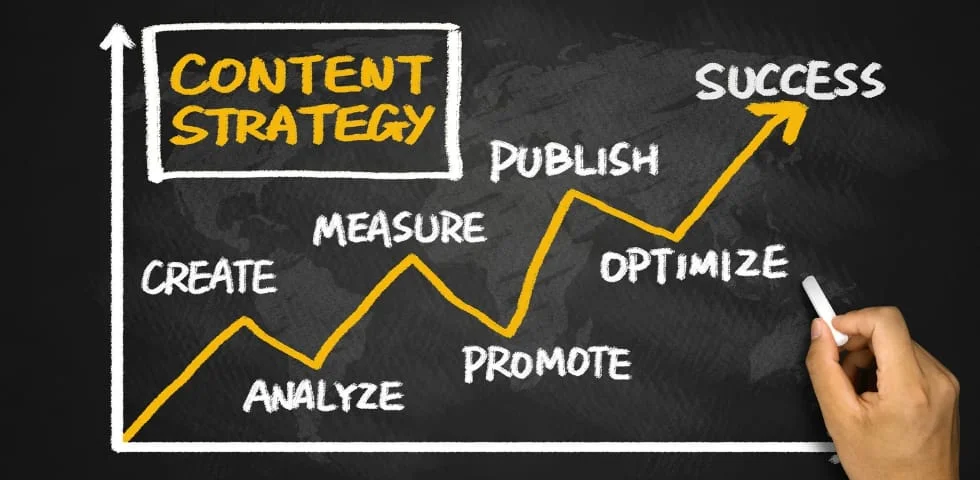
Blogging
Blogging is a powerful tool in your content marketing arsenal, particularly for e-commerce businesses. By regularly publishing blog posts, you can drive organic traffic to your site, enhance your SEO efforts, and establish your brand as an authority in your niche.
- SEO Benefits: Each blog post you publish is an opportunity to rank for additional keywords in search engines. By focusing on topics relevant to your products and audience, you can attract visitors who are interested in what you offer. For example, if you sell eco-friendly products, a blog post titled “Top 10 Eco-Friendly Products to Reduce Your Carbon Footprint” could attract readers who are likely to purchase from your store.
- Educational Content: Blog posts can also educate your audience about your products and industry. How-to guides, product comparisons, and tips for using your products can position your brand as a trusted resource. For instance, if you sell skincare products, a post like “How to Build a Skincare Routine for Glowing Skin” can help potential customers understand how your products fit into their daily regimen.
- Internal Linking: Use your blog to link to related product pages within your e-commerce site. This not only helps with SEO but also guides readers from informational content to transactional pages, increasing the likelihood of conversions.
- Engagement: Encourage readers to comment on your blog posts and share them on social media. This engagement can boost your post’s visibility and create a sense of community around your brand.
Video Marketing
Video content is one of the most engaging forms of media, and it’s particularly effective for showcasing products. Here’s how to leverage video marketing in your e-commerce strategy:
- Product Demonstrations: Videos that show your products in action can be incredibly persuasive. Whether it’s a tutorial on how to use a product or a demonstration of its features, video helps potential customers visualize the product’s benefits. For example, if you sell kitchen gadgets, a video showing how a particular tool speeds up meal prep could encourage viewers to make a purchase.
- Customer Testimonials: Featuring video testimonials from satisfied customers can build trust and provide social proof. When potential buyers see real people vouching for your products, they’re more likely to believe in the value of your offerings.
- Behind-the-Scenes Content: Give your audience a peek behind the curtain with videos that show how your products are made, who the people behind your brand are, or what goes into ensuring quality. This transparency can humanize your brand and foster a deeper connection with your customers.
- Live Streams: Platforms like Instagram, Facebook, and YouTube offer live streaming features that allow you to engage with your audience in real-time. Live streams can be used for product launches, Q&A sessions, or showcasing new arrivals. The interactive nature of live videos can create a sense of urgency and excitement, driving immediate sales.
User-Generated Content (UGC)
User-generated content is a highly effective way to build trust and increase product visibility. When customers share their experiences with your products on social media or through reviews, they provide authentic endorsements that resonate with other consumers.
- Encouraging UGC: Encourage your customers to share their purchases on social media by creating a branded hashtag or offering a chance to be featured on your official accounts. You can also incentivize UGC by running contests where participants must post a photo or video of your product to enter.
- Leveraging UGC: Once you have a collection of UGC, share it across your marketing channels. Feature customer photos on your product pages, repost UGC on your social media accounts, and highlight positive reviews in your email campaigns. This not only strengthens social proof but also makes your customers feel valued and appreciated.
- Product Reviews and Ratings: Display customer reviews and ratings prominently on your product pages. Many consumers rely on these reviews to make purchasing decisions, and a high volume of positive reviews can significantly increase conversion rates.
By integrating blogging, video marketing, and user-generated content into your content strategy, you can enhance product visibility, drive more traffic to your site, and ultimately boost sales.
Utilizing Paid Advertising (PPC, Google Ads)
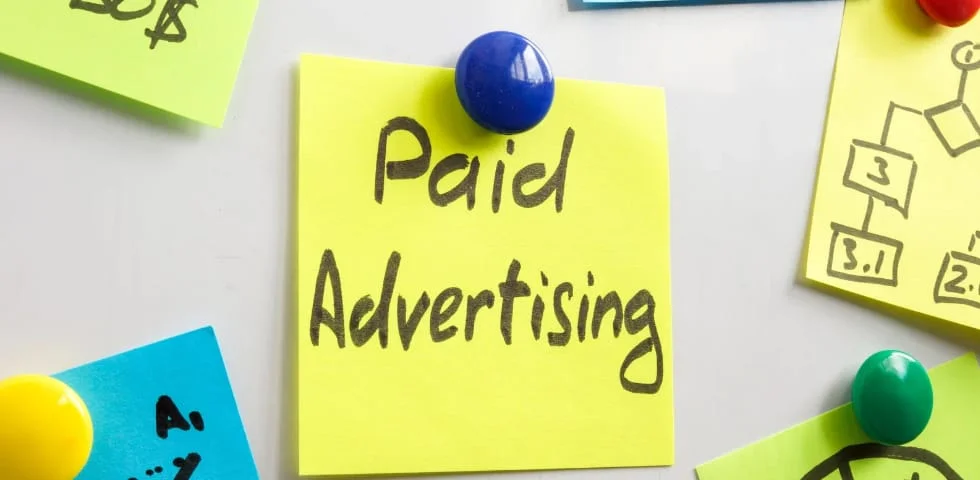
Understanding PPC
Pay-Per-Click (PPC) advertising is one of the most effective ways to drive immediate traffic to your e-commerce site. Unlike organic strategies, which take time to build momentum, PPC allows you to reach potential customers instantly. Here’s how it works:
- How PPC Works: With PPC, you bid on specific keywords relevant to your products. When users search for those keywords, your ads appear at the top of search engine results or across various websites in display networks. You only pay when someone clicks on your ad, making it a cost-effective way to drive targeted traffic.
- Platforms: Google Ads is the most popular PPC platform, offering both search ads (which appear in Google search results) and display ads (which appear on websites within Google’s display network). Other platforms like Bing Ads, Facebook Ads, and Amazon Sponsored Products also offer PPC advertising options tailored to e-commerce businesses.
Setting Up Campaigns
A successful PPC campaign starts with careful planning and execution. Here’s how to set up your campaigns:
- Keyword Selection: Begin by selecting keywords that are highly relevant to your products. Use tools like Google Keyword Planner to identify keywords with a balance of high search volume and low competition. Consider both broad match keywords (e.g., “running shoes”) for general exposure and long-tail keywords (e.g., “best running shoes for marathon training”) for more targeted traffic.
- Ad Copywriting: Craft compelling ad copy that grabs attention and clearly communicates the value of your product. Include your primary keyword in the ad headline, and use action-oriented language in the description to encourage clicks. Highlight special offers, such as free shipping or discounts, to make your ad more enticing.
- Landing Pages: Ensure that the landing pages linked to your ads are highly relevant to the keywords and ad copy. A well-designed landing page with clear CTAs (calls to action) can significantly improve your conversion rate. For example, if your ad promotes a specific product, the landing page should feature that product prominently, with a simple path to purchase.
- Budgeting and Bidding: Set a daily or monthly budget for your PPC campaigns based on your marketing goals and overall budget. Use bidding strategies like cost-per-click (CPC) or cost-per-acquisition (CPA) to control your spending. Start with a conservative bid and adjust based on the performance data over time.
Optimizing for ROI
To maximize the return on investment (ROI) from your PPC campaigns, continuous optimization is key:
- Ad Performance Monitoring: Regularly monitor key performance indicators (KPIs) such as click-through rate (CTR), conversion rate, and cost-per-click. Use this data to identify high-performing keywords and ads, as well as those that may need tweaking or removal.
- A/B Testing: Conduct A/B tests on different elements of your ads, such as headlines, descriptions, images, and CTAs. Testing helps you determine which variations perform best and allows you to optimize your campaigns for higher conversion rates.
- Negative Keywords: Use negative keywords to exclude search terms that are irrelevant to your products. This helps prevent your ads from showing up for searches that are unlikely to convert, saving your budget for more qualified clicks.
- Remarketing: Remarketing allows you to target users who have previously visited your website but didn’t complete a purchase. By displaying tailored ads to these users as they browse other sites or search engines, you can remind them of your products and encourage them to return and complete their purchase.
Remarketing
Remarketing, or retargeting, is a powerful way to re-engage potential customers who have already shown interest in your products:
- How It Works: Remarketing involves placing a small piece of code, called a pixel, on your website. This pixel tracks visitors and enables you to display targeted ads to them as they browse other websites or use social media platforms.
- Segmenting Audiences: Create segments based on specific behaviors, such as users who viewed a particular product or added items to their cart but didn’t check out. Tailor your ads to these segments with messages that resonate, such as offering a discount to encourage cart abandoners to complete their purchase.
- Dynamic Remarketing: Dynamic remarketing takes personalization a step further by automatically showing ads that feature the exact products users viewed on your site. This approach keeps your products top of mind and can significantly increase conversion rates.
By utilizing PPC and remarketing effectively, you can drive targeted traffic to your e-commerce site, increase conversions, and maximize your advertising spend.
Analyzing Data and Metrics to Optimize Campaigns

Tracking Tools
To measure the success of your e-commerce marketing efforts, it’s essential to use the right tracking tools. These tools help you monitor key metrics, understand user behavior, and make data-driven decisions to optimize your campaigns.
- Google Analytics:
Google Analytics is a powerful tool that provides comprehensive insights into your website traffic and user behavior. It tracks a wide range of metrics, including the number of visitors, bounce rate, average session duration, and conversion rate. By setting up goals and e-commerce tracking within Google Analytics, you can monitor the performance of specific campaigns, products, and marketing channels. - Google Search Console:
This tool allows you to track your site’s performance in Google search results. You can see which queries bring traffic to your site, how your pages are ranking, and identify any technical issues that might be affecting your SEO performance. Search Console also provides insights into click-through rates (CTR) for your search listings, helping you refine your meta tags for better results. - Facebook Insights:
If you’re running social media campaigns on Facebook or Instagram, Facebook Insights provides valuable data on how your ads are performing. It tracks metrics like reach, engagement, CTR, and conversions. This data helps you understand which ads resonate with your audience and which may need adjustments. - Email Marketing Software:
Most email marketing platforms, such as Mailchimp, Klaviyo, or HubSpot, offer built-in analytics tools. These tools allow you to track open rates, CTRs, and conversion rates for your email campaigns. By analyzing this data, you can optimize your email content, timing, and segmentation strategies.
Key Metrics to Monitor
Monitoring the right metrics is crucial for evaluating the effectiveness of your e-commerce marketing campaigns. Here are some of the most important metrics to focus on:
- Conversion Rate:
Conversion rate measures the percentage of visitors who complete a desired action on your site, such as making a purchase or signing up for a newsletter. A high conversion rate indicates that your marketing efforts and website design are effectively guiding users toward completing a purchase. - Customer Acquisition Cost (CAC):
CAC calculates the cost of acquiring a new customer. It’s determined by dividing the total marketing spend by the number of new customers gained over a specific period. Monitoring CAC helps you ensure that your marketing campaigns are cost-effective and generating a healthy return on investment. - Average Order Value (AOV):
AOV tracks the average amount spent by customers per transaction. Increasing AOV can significantly boost your revenue without the need to acquire more customers. Strategies to increase AOV include upselling, cross-selling, and offering discounts on larger purchases. - Return on Ad Spend (ROAS):
ROAS measures the revenue generated for every dollar spent on advertising. It’s a critical metric for assessing the effectiveness of your paid advertising campaigns. A ROAS of 4:1, for example, means that you earned $4 in revenue for every $1 spent on ads. Monitoring and optimizing ROAS ensures that your ad campaigns are profitable. - Cart Abandonment Rate:
This metric tracks the percentage of shoppers who add items to their cart but do not complete the purchase. A high cart abandonment rate can indicate issues with your checkout process, such as unexpected costs, complicated navigation, or a lack of payment options. Reducing cart abandonment can significantly increase your conversion rate.
A/B Testing
A/B testing, or split testing, is a method of comparing two versions of a webpage, email, or ad to determine which one performs better. Here’s how to use A/B testing to optimize your campaigns:
- Identify Variables:
Start by identifying the elements you want to test. This could be the headline of an ad, the CTA button color on a landing page, or the subject line of an email. Make sure to test only one variable at a time to isolate its impact on performance. - Create Variations:
Develop two versions of the element you’re testing—Version A (the control) and Version B (the variation). For example, you might test a red CTA button versus a green one to see which drives more clicks. - Run the Test:
Split your audience evenly between the two versions and run the test over a set period. Ensure the test runs long enough to gather statistically significant results, but not so long that external factors (like seasonal changes) could influence the outcome. - Analyze Results:
Use your tracking tools to monitor the performance of each version. The version that achieves the higher conversion rate or other desired metric is the winner. Implement the winning variation across your campaign, and consider running new tests to continue optimizing.
By systematically analyzing data and optimizing your marketing strategies based on these insights, you can continually improve your campaign performance, increase conversions, and drive greater ROI.
Case Studies of Successful E-commerce Marketing Campaigns

Case Study 1: Glossier – Building a Brand through Community Engagement
Overview:
Glossier, a beauty brand, has achieved phenomenal success by focusing on community engagement and leveraging user-generated content (UGC). Instead of relying solely on traditional advertising, Glossier built its brand by fostering a community of beauty enthusiasts who became advocates for the brand.
Strategies Used:
- User-Generated Content:
Glossier encouraged its customers to share their experiences with its products on social media, using branded hashtags like #Glossier and #GlossierPink. This UGC served as social proof, showing potential customers how the products looked and worked on real people. - Influencer Collaborations:
The brand partnered with micro-influencers who had strong, engaged followings within the beauty community. These influencers created content that was authentic and relatable, helping Glossier reach a broader audience without seeming overly commercial. - Customer Feedback:
Glossier actively sought and implemented customer feedback to develop new products. This approach made customers feel valued and involved in the brand’s growth, fostering loyalty and repeat purchases.
Results:
Glossier’s strategy of building a community-centric brand has led to significant growth. The company reached over $100 million in revenue within just a few years of launching and continues to thrive, largely due to its strong community engagement.
Key Takeaways:
Building a brand through community and UGC can create a strong sense of loyalty and advocacy. By listening to customers and involving them in the brand’s journey, you can foster deeper connections and drive long-term growth.
Case Study 2: Dollar Shave Club – Disrupting an Industry with Viral Content
Overview:
Dollar Shave Club disrupted the traditional razor market with a direct-to-consumer model and a highly memorable marketing campaign. The company’s success is often attributed to its viral launch video, which perfectly captured the brand’s unique voice and value proposition.
Strategies Used:
- Viral Video Marketing:
Dollar Shave Club’s launch video, titled “Our Blades Are F***ing Great,” quickly went viral, generating millions of views in a matter of days. The video’s humorous and irreverent tone resonated with viewers, setting the brand apart from its more established competitors. - Subscription Model:
By offering a subscription service for razors, Dollar Shave Club provided convenience and value to customers. The model allowed customers to receive new razors regularly, reducing the hassle of purchasing them in-store. - Targeted Digital Advertising:
The brand used targeted digital advertising to reach its core demographic—men looking for a simple, affordable shaving solution. By focusing on digital channels, Dollar Shave Club was able to efficiently acquire customers without the need for costly traditional advertising.
Results:
The viral video catapulted Dollar Shave Club into the spotlight, leading to rapid growth and over 12,000 orders within 48 hours of the video’s release. The brand continued to grow, eventually being acquired by Unilever for $1 billion.
Key Takeaways:
A well-executed viral marketing campaign can have an enormous impact on brand awareness and customer acquisition. Combining humor, a clear value proposition, and a disruptive business model can set a brand apart in a competitive market.
Case Study 3: Warby Parker – Integrating Online and Offline Experiences
Overview:
Warby Parker, an eyewear brand, successfully integrated its online and offline experiences to create a seamless customer journey. By offering high-quality, affordable eyewear online and through physical showrooms, Warby Parker disrupted the traditional eyewear industry.
Strategies Used:
- Home Try-On Program: Warby Parker allowed customers to choose five frames to try at home, free of charge. This innovative approach removed the risk of buying glasses online and made the purchasing process more convenient for customers.
- Showroom Strategy: While initially an online-only brand, Warby Parker eventually opened showrooms in select cities to complement its e-commerce operations. These showrooms allowed customers to try on glasses in person before making a purchase, bridging the gap between online and offline shopping.
- Content Marketing: Warby Parker invested in content marketing to educate customers about eyewear and eye health. The brand’s blog, videos, and social media content provided valuable information, helping to build trust and authority.
Results:
Warby Parker’s innovative approach to integrating online and offline experiences helped the brand grow rapidly. The company has since expanded to over 100 retail locations and achieved a valuation of over $3 billion.
Key Takeaways:
Seamlessly integrating online and offline experiences can provide customers with convenience and confidence in their purchasing decisions. Offering unique value propositions, such as a home try-on program, can help differentiate your brand and drive growth.
These case studies demonstrate the power of innovative e-commerce marketing strategies. By focusing on community engagement, viral content, and a seamless customer experience, these brands have achieved remarkable success.
Common Mistakes in E-commerce Marketing and How to Avoid Them
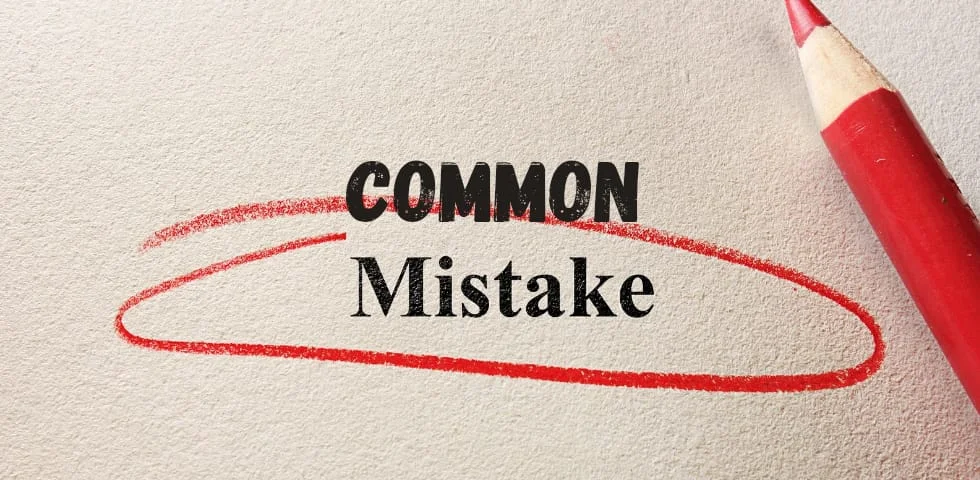
Mistake 1: Neglecting Mobile Optimization
The Issue:
With mobile devices accounting for over half of all web traffic, neglecting mobile optimization can severely limit your reach and sales potential. A website that isn’t mobile-friendly can lead to poor user experience, high bounce rates, and lost sales.
How to Avoid It:
- Responsive Design: Ensure your e-commerce site uses responsive design, meaning it adapts to different screen sizes and orientations. A responsive site provides a seamless experience whether customers are browsing on a smartphone, tablet, or desktop.
- Mobile-Friendly Navigation: Simplify your site’s navigation for mobile users. Use clear, concise menus, and ensure that buttons and links are large enough to be easily tapped. Reducing the number of steps in the checkout process can also help prevent cart abandonment.
- Speed Optimization: Mobile users expect fast loading times. Compress images, leverage browser caching, and minimize code to improve load times on mobile devices. Tools like Google’s PageSpeed Insights can help you identify areas for improvement.
Mistake 2: Ignoring the Importance of SEO
The Issue:
Without proper SEO, your e-commerce site may not appear in search engine results, making it difficult for potential customers to find you. Ignoring SEO can result in missed opportunities for organic traffic and sales.
How to Avoid It:
- Keyword Research: Conduct thorough keyword research to identify the terms your target audience is searching for. Focus on both high-volume keywords and long-tail keywords that are specific to your niche. Incorporate these keywords naturally into your product descriptions, titles, and meta tags.
- Technical SEO: Pay attention to the technical aspects of SEO, such as site speed, mobile-friendliness, and structured data. Regularly audit your site for issues that could impact your search rankings, and fix them promptly.
- Content Creation: Consistently create high-quality content that addresses the needs and interests of your audience. Blog posts, how-to guides, and product comparisons not only provide value but also improve your site’s SEO by targeting additional keywords.
Mistake 3: Overlooking the Power of Social Proof
The Issue:
Social proof, such as customer reviews and testimonials, is crucial for building trust with potential buyers. Overlooking this aspect can result in lower conversion rates, as customers are less likely to purchase from a brand that lacks credibility.
How to Avoid It:
- Encourage Reviews: Actively encourage customers to leave reviews by following up after purchases or offering incentives. Display these reviews prominently on product pages to help reassure potential buyers.
- Leverage User-Generated Content: Showcase user-generated content (UGC) on your website and social media channels. UGC, such as photos or videos of customers using your products, serves as authentic endorsements that can influence purchasing decisions.
- Feature Testimonials: Collect and display testimonials from satisfied customers. Highlight these testimonials on your homepage, in email campaigns, and on landing pages to build trust with new visitors.
Mistake 4: Underestimating the Importance of Customer Retention
The Issue:
Focusing solely on acquiring new customers while neglecting existing ones is a common mistake. Customer retention is often more cost-effective and can lead to higher lifetime value, yet many e-commerce businesses fail to prioritize it.
How to Avoid It:
- Personalized Marketing: Use customer data to personalize marketing efforts. Send tailored emails with product recommendations based on previous purchases or offer special discounts to loyal customers. Personalization makes customers feel valued and increases the likelihood of repeat purchases.
- Loyalty Programs: Implement a loyalty program that rewards customers for their continued business. Points systems, exclusive offers, and early access to new products can incentivize repeat purchases and foster brand loyalty.
- Excellent Customer Service: Providing exceptional customer service can turn one-time buyers into lifelong customers. Respond promptly to inquiries, address issues quickly, and go the extra mile to ensure customer satisfaction. Positive experiences encourage repeat business and referrals.
Mistake 5: Failing to Analyze and Optimize
The Issue:
Many e-commerce businesses make the mistake of setting up marketing campaigns without thoroughly analyzing their performance. Without continuous analysis and optimization, campaigns can underperform, leading to wasted resources and missed opportunities.
How to Avoid It:
- Regularly Monitor Metrics:
Use tools like Google Analytics, Facebook Insights, and your email marketing platform’s analytics to track key metrics. Monitor performance indicators such as conversion rates, return on ad spend (ROAS), and customer acquisition cost (CAC) to understand what’s working and what isn’t. - A/B Testing:
Continuously test different elements of your marketing campaigns, such as ad copy, email subject lines, and landing page designs. A/B testing helps you determine which variations perform best, allowing you to optimize for higher conversions. - Adjust Strategies as Needed:
Be willing to pivot your strategies based on data. If a particular campaign isn’t delivering the desired results, analyze the data to identify the problem and make the necessary adjustments. Flexibility and a willingness to adapt are key to long-term success.
By avoiding these common mistakes and focusing on best practices, you can enhance your e-commerce marketing efforts, drive more sales, and build a loyal customer base.
The Future of E-commerce Marketing: Trends to Watch
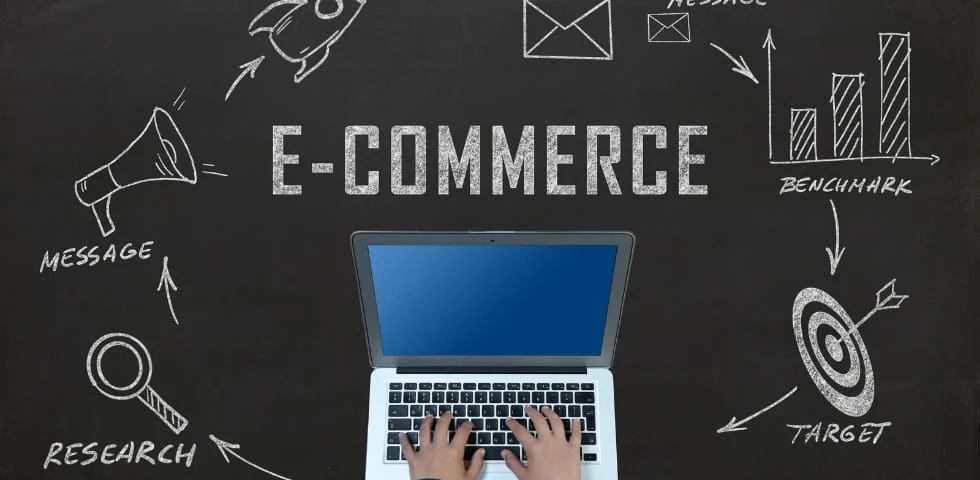
Emerging Technologies
The future of e-commerce marketing is closely tied to the rise of emerging technologies that are transforming how businesses engage with customers. Here are some key technologies to watch:
- Artificial Intelligence (AI) and Machine Learning:
AI and machine learning are revolutionizing e-commerce by enabling highly personalized shopping experiences. These technologies analyze vast amounts of data to predict customer behavior, recommend products, and optimize pricing. For example, AI-driven chatbots can provide instant customer support, answer queries, and guide users through their shopping journey, improving customer satisfaction and increasing sales. - Augmented Reality (AR):
AR technology is bridging the gap between online and in-store shopping by allowing customers to visualize products in their real-world environment. Brands like IKEA and Warby Parker are already using AR to let customers see how furniture would look in their homes or how glasses would fit on their faces. As AR becomes more accessible, it will likely become a standard feature in e-commerce, reducing purchase hesitation and returns. - Voice Search:
With the growing popularity of smart speakers like Amazon Echo and Google Home, voice search is becoming a significant factor in e-commerce. Customers are increasingly using voice commands to search for products, make purchases, and manage their shopping lists. To stay competitive, e-commerce businesses need to optimize their content for voice search, focusing on natural language queries and conversational keywords.
Consumer Behavior Changes
As technology evolves, so do consumer expectations and behaviors. Understanding these changes is crucial for staying ahead in the e-commerce landscape:
- Demand for Convenience:
Modern consumers prioritize convenience and speed. They expect seamless shopping experiences across multiple channels—whether they’re browsing on a desktop, shopping via a mobile app, or interacting with a brand on social media. This shift is driving the adoption of omnichannel strategies, where businesses integrate their online and offline operations to provide a unified customer experience. - Sustainability and Ethical Shopping:
Consumers are increasingly conscious of the environmental and social impact of their purchases. Brands that demonstrate a commitment to sustainability, ethical sourcing, and transparency are gaining favor with these values-driven shoppers. E-commerce businesses should consider incorporating sustainable practices, such as eco-friendly packaging, carbon-neutral shipping, and ethical product sourcing, to attract and retain customers. - Rise of Subscription Models:
Subscription-based e-commerce is on the rise, offering customers the convenience of regular deliveries of products they use frequently. This model is particularly popular in industries like beauty, food, and health. By offering subscription options, businesses can create a steady stream of recurring revenue while enhancing customer loyalty.
Preparing for the Future
To thrive in the evolving e-commerce landscape, businesses must be proactive in adopting new trends and technologies. Here’s how to prepare:
- Invest in Technology:
Stay ahead of the curve by investing in the latest e-commerce technologies. This might include AI-driven personalization tools, AR features, or advanced analytics platforms. Early adoption of these technologies can provide a competitive advantage and improve customer satisfaction. - Focus on Customer Experience:
As customer expectations continue to rise, delivering an exceptional shopping experience should be a top priority. This means optimizing every touchpoint, from your website’s usability to your customer service processes. Consider conducting regular user experience (UX) audits and gathering customer feedback to identify areas for improvement. - Embrace Flexibility:
The e-commerce industry is dynamic, and businesses that can adapt quickly to changes will have a significant advantage. Whether it’s shifting consumer preferences or new technological advancements, staying flexible and open to innovation is key to long-term success. - Sustainability Initiatives:
Implementing sustainable practices can not only attract environmentally conscious consumers but also set your brand apart in a crowded market. Consider ways to reduce your carbon footprint, such as optimizing supply chain efficiency, offering carbon-neutral shipping options, or partnering with eco-friendly suppliers. - Stay Informed:
The digital landscape changes rapidly, so staying informed about the latest trends and best practices is crucial. Follow industry news, attend webinars, and participate in conferences to keep your knowledge up to date. Being informed allows you to anticipate changes and adapt your strategies accordingly.
By staying ahead of these trends and preparing for the future, e-commerce businesses can continue to grow and thrive in an increasingly competitive marketplace.
Conclusion
In the ever-evolving world of e-commerce, staying ahead of the competition requires more than just a great product—it demands a strategic approach to marketing that is both innovative and customer-focused. From leveraging the power of SEO and social media to embracing emerging technologies like AI and AR, the strategies discussed in this blog post provide a comprehensive roadmap for promoting and selling products online.













